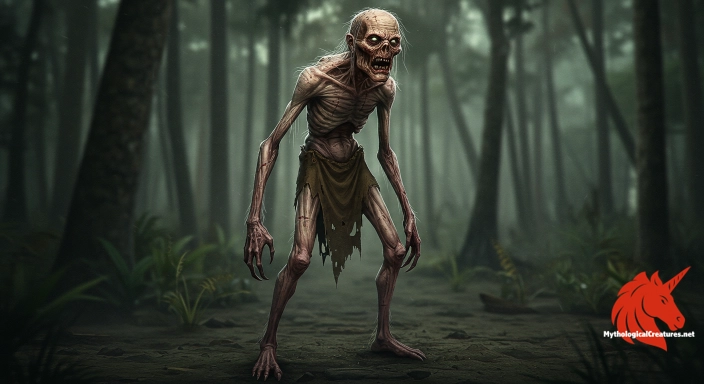Amethyste: Amethyste is a mythological nymph from Greek lore, renowned for her unique transformation into the amethyst gemstone.

Amethyste
Amethyste - Explains the origin of the semi-precious stone amethyst through a tale of divine intervention and transformation.
Origins & First Encounters
Amethyste emerges as an enigmatic figure whose very name connotes a state of purity and abstinence, setting her apart in the vivid landscape of mythic transformation. Her legend, though not rooted in the earliest layers of Greek mythology, interlaces themes of beauty, divine intervention, and tragedy. She is portrayed as a nymph whose fate is dramatically altered by the intervention of a goddess, often identified with Artemis or Diana, to shield her from the threatening designs of Dionysus. This act of metamorphosis, intended to preserve her virtue, transformed her into the gemstone that carries her name. Throughout later retellings, her story has captivated audiences by reflecting the perennial human fascination with change and the interplay of mortal vulnerability and divine power. The narrative encapsulates an innate tension between the forces of indulgence and restraint, embodied in the contrasting figures of Dionysus and Artemis. Her transformation into a gem symbolised not only protection but also the crystallisation of an ideal of purity that transcends time. In various artistic depictions and cultural recountings, Amethyste stands as a subtle reminder of the sacrifices made in the name of preservation and honour. Her myth speaks to themes of renewal, loss, and the lasting imprint of divine mercy. Ultimately, she occupies a unique niche in modern retellings of classical myth, resonating deeply with both ancient motifs and contemporary sensibilities.
Source Texts & Tale Variants
Despite the captivating nature of her narrative, Amethyste’s story finds little support in the corpus of ancient texts, and its earliest attestations are conspicuously absent from classical literature. Later mythographers and storytellers, particularly during the Renaissance and early modern periods, began to weave her tale into the broader fabric of transformative legends. These versions often merge and modify older motifs, creating a hybrid narrative that explains the origin of the amethyst gemstone as a product of divine intervention. Some accounts elaborate on the intimate details of her transformation, while others simply allude to her fate in passing, contributing to a rich tapestry of variations. The story is typically set against the backdrop of Greek and Roman myth, even though its literary roots appear to be more modern. Various regional manuscripts and encyclopaedic compilations have served as conduits for her lore, each adding layers of nuance and interpretation. In the absence of direct ancient evidence, artistic and allegorical reinterpretations have come to dominate the narrative landscape. This multiplicity of versions ensures that her story remains fluid, with each retelling emphasising different aspects of divine justice, sacrifice, and the symbolic power of transformation. Her myth endures because it reflects a universal human preoccupation with the consequences of beauty and the inevitability of change.
Form & Powers
In her original, untransformed state, the nymph Amethyste was often imagined as possessing a luminous beauty, characterised by delicate features and an almost ethereal light that seemed to emanate from within. Post-transformation, this beauty was mystically preserved within the gemstone now known as amethyst, which exhibits a captivating spectrum of purples. The gemstone is typically described as having a natural translucence, with a depth of colour that can shift from soft lavender to a more intense violet under different lighting. Some depictions highlight subtle swirls and variations within the stone that suggest an inner vitality, as if traces of her former life linger in the very structure of the gem. Her pre-transformation form was sometimes noted for having an air of serene grace, while her post-transformation state encapsulates a timeless quality that hints at both fragility and permanence. The stone itself is often small enough to be worn as a cherished piece of jewellery, yet its mythical origin imbues it with a sense of grandeur that transcends its physical size. Declared to be as smooth as polished glass, the gem carries an almost palpable, otherworldly glow that modern observers find enchanting. Variations in its size and clarity have been noted in different artistic renderings, with some portraying larger, more resplendent stones and others depicting delicate, bead-sized relics. The intricate play of light on its surface continuously transforms its appearance, echoing the fluid nature of myth itself.
Regional Faces
Across different cultural regions, the story of Amethyste has been adapted and reshaped to fit local traditions and sensibilities. In classical Greece and Rome, her narrative is interlaced with themes of divine protection and the preservation of chastity, an idea that resonated deeply with local values concerning purity and virtue. Some Mediterranean traditions emphasise the stone’s protective properties, a symbol believed to ward off the excesses of intoxication and to maintain clarity of mind. In contrast, later European renditions of the myth often romanticised her transformation, casting her as a tragic heroine whose sacrifice was immortalised in a work of nature so beautiful it defies decay. In certain Eastern European folk traditions, similar metamorphosis tales appear, where figures are transformed into natural objects as a form of celestial mercy, drawing a parallel to Amethyste’s own fate. Local artistic interpretations in Italy and France frequently infuse the myth with Renaissance sensibilities, highlighting both the aesthetic qualities of the gem and its allegorical significance. Even in modern Mediterranean cultures, the amethyst stone is revered for its purported protective and healing properties, a legacy that traces back to these older versions of the myth. Such regional adaptations underscore the dynamic interplay between local cultural identities and overarching mythological themes, ensuring that her story remains both diverse and universally appealing.
Cultural Parallels
When comparing Amethyste’s myth to other transformational narratives in classical traditions, striking similarities as well as intriguing contrasts become evident. Her metamorphosis bears a thematic resemblance to that of Daphne, who was transformed into a laurel tree to escape unwanted attention, highlighting a recurring motif in mythology where transformation serves as both a means of escape and preservation. Likewise, the story of Narcissus, with its focus on beauty and tragic consequence, mirrors some of the reflective qualities inherent in Amethyste’s narrative. Similar to these figures, the tale of Amethyste bridges the gap between mortal vulnerability and the capricious intervention of the divine. In several cultures, stories involving metamorphosis into natural objects—whether trees, stones, or even celestial bodies—are emblematic of a broader preoccupation with change and transcendence. The amethyst gemstone itself has come to symbolise not only protection but also a counterpoint to excess, standing in stark contrast to Dionysus’s emblematic indulgence. Comparative analysis reveals that while many cultures embrace metamorphosis as a narrative device, the specific transformation of a nymph into a precious stone remains particularly distinctive. This parallelism underscores how mythic transformations, regardless of their specific details, serve as enduring allegories for the preservation of identity in the face of overwhelming forces. Across these varied narratives, the interplay between divine intervention and mortal destiny is constantly reinterpreted to reflect changing societal values and artistic preferences.
Legacy & Modern Evolution
Over the centuries, the myth of Amethyste has evolved significantly, mirroring shifts in artistic, cultural, and literary trends. In earlier centuries, her story was primarily a cautionary tale woven into the fabric of myth to illustrate the sanctity of purity and the devastating consequences of unchecked desire. As the Renaissance rekindled interest in classical mythology, her transformation was reimagined as an act of both divine mercy and artistic symbolism, inspiring painters, poets, and sculptors alike. The gemstone amethyst, long revered for its beauty, gradually came to embody the very qualities of resilience and spiritual protection reflected in her tale. In modern times, the myth has been adapted to suit contemporary sensibilities, often focussing on themes of empowerment and the reclamation of one's narrative against overwhelming odds. Today, the amethyst continues to serve as a symbol in jewellery and alternative healing practices, celebrated for its calming properties and connection to transcendent beauty. As modern storytellers and artists revisit her legend, new dimensions are added that link ancient virtues with current ideals of self-care and inner strength. Her legacy now straddles both myth and material culture, where the stone's allure encapsulates centuries of narrative evolution. The transformation of a once mortal beauty into a timeless gem demonstrates the enduring human fascination with metamorphosis, elevating her story from simple myth to a multifaceted emblem of hope and resilience.
Interesting Fact
The name 'Amethyste' literally means 'non-drunk', which may be linked to ancient beliefs that the amethyst gemstone could ward off intoxication.
Quick Creature Info
Features:
Associations:
Our Mythic Legendary Rating:

Also Sometimes Known As:
Physical Attributes:
Lore:
References
Discover Another Mythical Legend You May Not Have Heard Of?
Uncover the mysteries of ancient folklore and expand your knowledge of legendary beings from cultures around the world.
Dare to Meet the Boo hag....
Mythical Disclaimer: The images and data on this site are derived from various historical and literary sources, but we have found that many myths often have multiple versions and interpretations across references, sometimes contradictory. As a result, these creature depictions are artistic interpretations—imaginative blends of folklore, legend, and a dash of AI guesswork. Because creature descriptions vary widely, our illustrations and accompanying information represent our best effort to honor mythology while bridging creative gaps. Enjoy these interpretations—just remember, we've done our best to respect the stories and validate available data, but in the realm of mythology, details often shift, imagination leads the way, and nothing is ever set in stone!
Curated by the Mythological Creatures Team (rev. May 2025)
